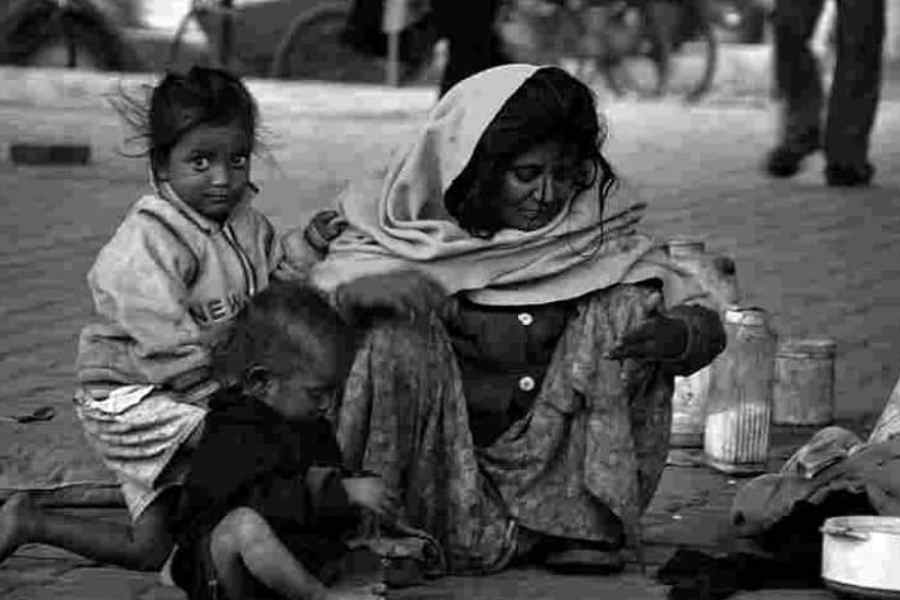The majority of Indians are poor going by the World Bank’s criterion for determining global poverty, a retired JNU economics professor has asserted.
Arun Kumar’s contention comes days after Niti Aayog chief executive officer B.V.R. Subrahmanyam claimed on February 25 that the proportion of the poor in India had dropped to below five per cent of the population.
Subrahmanyam did not explain how he had arrived at the figure. It’s possible he had applied — after adjusting for inflation — the poverty line recommended by the Suresh Tendulkar committee in 2005 on the recently released findings of the Household Consumption Expenditure Survey (HCES) 2022-23, done by the National
Sample Survey Office.
Several experts have over the past week underlined that the latest HCES used a methodology different from those of past HCES, and the Tendulkar formula was therefore inapplicable to it.
Kumar added to this a different criticism, emphasising that the poverty line was not an absolute cut-off but changed across places and time. Therefore, the Tendulkar poverty line was not appropriate for 2022-23.
“The poverty line needs to be redefined from time to time. Certain goods and services like mobile phones may now be a necessity for even a poor person, such as a rickshaw-puller or plumber. But they were not considered so necessary two decades ago,” he said.
“Any poverty line ought to be based on the ‘social minimum necessary consumption’, which would today include a balanced diet, quality education for children, access to quality healthcare, adequate housing, proper clothing, clean drinking water and uninterrupted electricity. Those deprived of these facilities can be called poor.”
Kumar said that according to the World Bank’s global poverty line, anyone spending below $2.15 a day is poor. For a family of five, this comes to $322 or Rs 26,677 a month. However, the real value of $322 in terms of purchasing power parity comes to around Rs 10,000, he said.
In 2023, official reports said 94 per cent of the 8.4 crore unorganised-sector workers registered with the Union labour ministry’s E-Shram portal had declared they earned less than Rs 10,000 a month, Kumar said.
“I would consider 90 per cent of the 30 crore workers registered now to be earning less than Rs 10,000 a month,” he added.
Assuming that most of these workers supported a family of five, Kumar said, the majority of Indians “may be considered poor, if not extremely poor, going by the World Bank’s global poverty line”.
He clarified that the World Bank’s poverty line was not India-specific and that his calculations were merely “indicative”. However, since the government has not come up with a fresh poverty line and the Tendulkar recommendations are dated, the only appropriate poverty line available is the World Bank’s, Kumar added.
The erstwhile Planning Commission periodically set up expert committees to suggest an updated poverty line, which was applied to data obtained through the HCES. The Niti Aayog no longer sets up these committees.










